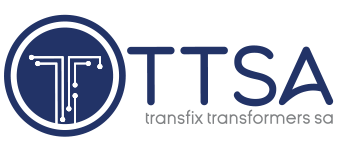Electricity utility Eskom expects to formally roll-out a virtual wheeling scheme, which it has been piloting with mobile telecoms group Vodacom since August, to the rest of the market before the end of 2024. The contracting platform will allow for one or more generators to transact with multiple customers that have operations distributed across the country, including those whose facilities are located in municipal distribution areas and connected to low-voltage networks.
The International Finance Corporation (IFC), part of the World Bank group, is to develop an offshore wind power road map for South Africa, IFC Principal Renewable Energy Specialist Sean Whittaker announced at the Windaba conference, at the Cape Town International Convention Centre, on late Thursday afternoon. (The IFC is the World Bank’s private sector financing institution.) “We’re very pleased to announce that we are initiating a road map for South Africa,” he said. “This work will be taking place over the next nine to 12 months.”
The energy sector requires consistent demand from a consistent flow of renewable energy projects in order to invest in local manufacturing, and not “haphazard demand that comes and goes”, says South African Renewable Energy Masterplan (Sarem) facilitator and Trade and Industrial Policy Strategies (TIPS) senior economist Gaylor Montmasson-Clair. “Anchor demand is critical. For me it is really important that we smooth out that process going forward.
With local electricity grid constraints becoming more prevalent and given the global emphasis on decarbonisation, the ongoing energy transition, as well as loadshedding, are expected to present both opportunities and risks for the South African steel industry, which is in decline. The South African Steel and Metal Fabrication Master Plan – released in 2021 – describes the local steel industry as being “largely in survival mode”, necessitating measures to increase demand for local steel and effective localisation.
The amended Extended Producer Responsibility (EPR) regulations, instituted in November 2020, require product importers and manufacturers in the packaging industry to contribute towards the recycling of product packaging, which has had a significant impact on waste production, says Zero Waste Technologies operations director Hein Fourie. A contentious issue in the amended regulations for manufacturing industry, particularly those in the electronic equipment manufacturing and paper and plastic packaging industries, is the requirement to become affiliates of producer responsibility organisations (PROs) which requires the payment of daily fees, based on net cost recovery to PROs, owing to the high volumes of waste they produce.
The South African Photovoltaic Industry Association (SAPVIA) has launched a new data portal that gives its members access to periodic data about solar installations across the country. The project, in collaboration with GEOTERRAIMAGE (GTI), was launched this week.
State-owned entity Eskom is undertaking a just energy transition strategy and pursuing repurposing and repowering of some of its coal-fired power stations separate to decommissioning them. This will see the company extend the deadline for the decommissioning of some coal-fired power stations, while loadshedding could potentially also worsen as it undertakes necessary maintenance during the summer months. This was indicated by Eskom Just Energy Transition GM Dr Vikesh Rajpaul on October 5, delivering one of the keynotes during the second day of the Joburg Indaba.
Electricity Minister Dr Kgosientsho Ramokgopa says he “laments” the time it takes for government to go from issuing requests for proposals (RFPs) to announcing preferred bidder status and reaching financial close when it comes to renewable energy power projects. “Our going out for RFPs and preferred bidder status is really the domain of the State, and the State takes an inordinate amount of time.”
An issue regarding wind farms that will have to be addressed is how to handle their inevitable decommissioning issues, including what to do with wind turbines (towers, machinery and blades) that have reached the end of their lives. This was the subject of a panel discussion on Thursday at the Windaba 2023 conference, at the Cape Town International Convention Centre. Dorper Wind Farm CEO and GM Mamoso May affirmed that educating people about what would happen at the end of a wind farm’s life should start now. And that education had to be across the wider South African society, not just in the communities adjacent to wind farms.
Presidential Climate Commission (PCC) executive director Dr Crispian Olver says South Africa’s energy transition and the pace at which it progresses will determine the country’s long-term economic and human-development prospects and should, thus, no longer be treated only as an environmental problem. Speaking at the Joburg Indaba, Olver acknowledged that stakeholders were “not of one mind” regarding the pace of the transition, despite broad-based agreement that South Africa needed to reduce its emissions, which are strongly associated with the continued dominance of coal in domestic energy production.
INDUSTRY NEWS
- NERSA appoints Electricity Market Advisory Forum to guide power-market reformDecember 19, 2025 - 2:04 pm
- Eskom offers more details on envisaged roles of the NTCSA and the TSODecember 18, 2025 - 11:04 am
- NTCSA says any electricity deal to salvage Mozal must ensure its financial sustainabilityDecember 17, 2025 - 3:01 pm
WHERE TO FIND US
Address
9 Yellow Street
Botshabelo Industrial Area
Botshabelo, Free State
Call / Email Us
Tel: +27 (0) 61 956 6772
Email: info@transfix.co.za
